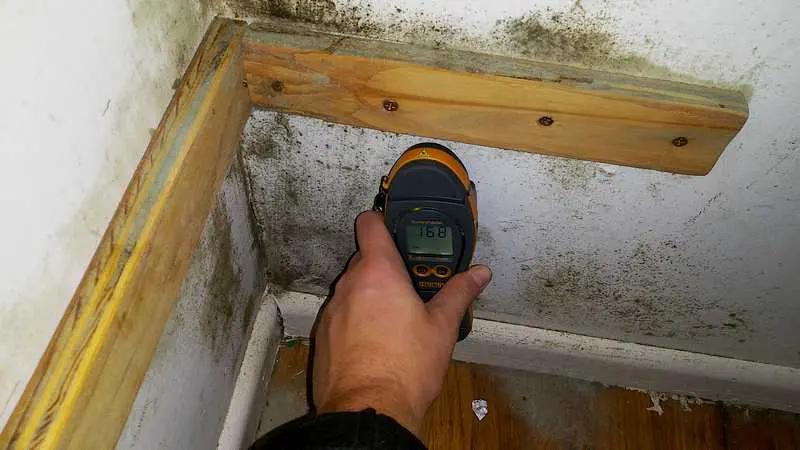Is the mold from humidity or a water leak?
You’ve found mold growing on your wall. The first step is to determine if it is from a humidity issue or a leak. Without first answering this question, you might inadvertently remove sheetrock that could’ve been cleaned. We’ll walk you through how to determine the moisture source behind common household mold problems.
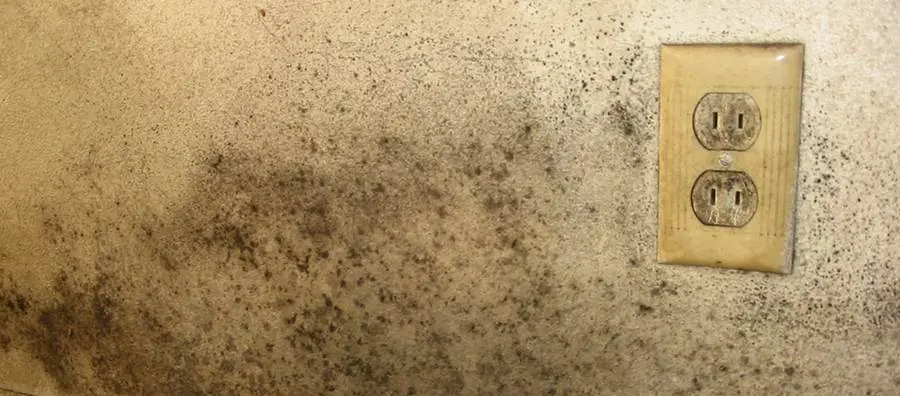
How to verify whether it’s condensation or a leak
Is it growing on an interior wall?
Humidity / condensation based mold nearly always grows on an exterior wall. If you find mold on an interior divider wall, you’re likely looking at a liquid water intrusion.
Is it growing behind the baseboard trim?
If so, you’ve got a liquid water intrusion issue on your hands. Condensation will only occur on the most inward surface on a wall. Anything nailed, glued, etc. to the wall is considered part of the wall structure and humidity cannot seep behind these materials. Pry the baseboard trim back slightly – usually you don’t even need to completely remove it. Do you see mold growing on the backside of the base trim or the sheetrock that was covered by the material?
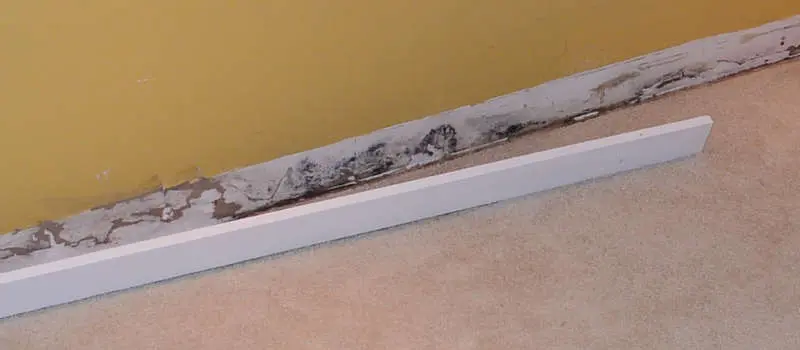
Mold growing behind the trim? Liquid water intrusion is the culprit.
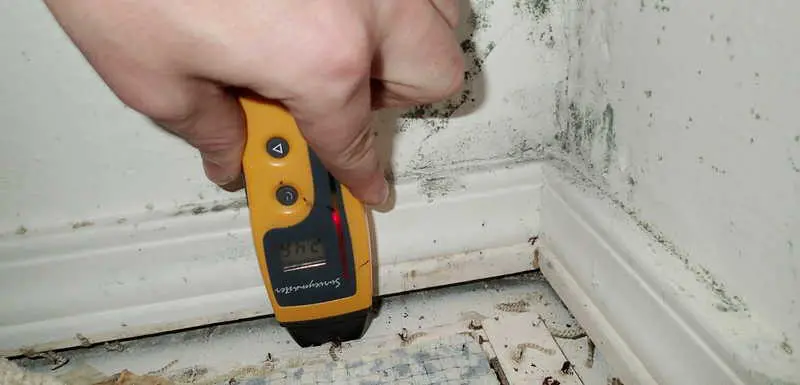
Before removing the baseboard trim.
Elevated moisture was detected in baseboard trim. Visible mold growth observed on the trim and the surrounding sheet rock. Is this due to a condensation & humidity issue or a liquid water intrusion? The best to fully verify your conclusion is to pull back the baseboard and look at the sheetrock.
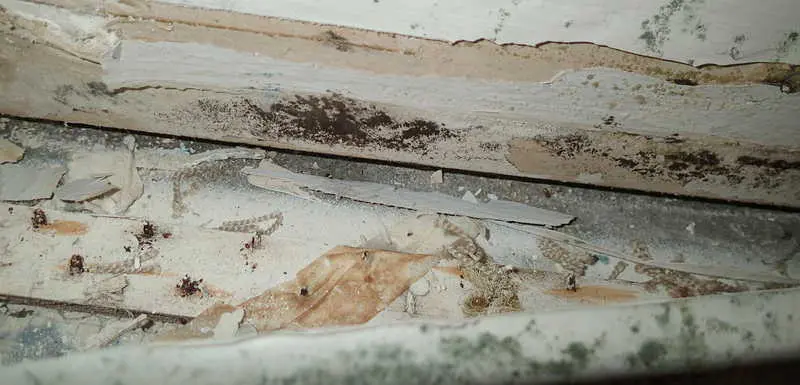
After removing the baseboard – mold growth behind the trim indicates a water leak, not humidity.
Check behind shelving supports
Notice the wood support rails in the closet in the photo below. You could easily determine whether this mold growth was from humidity by simply removing the four screws and pulling off the piece of wood. If no mold was found behind the wood, you have strong proof this is a humidity issue. Why? The humidity cannot migrate past the wood. Even if it could, it would condense on the outer layer of the wood, not on the side touching the sheet rock wall.
Condensation / humidity based mold
- Only grows on the warm side of the wall. In cool climates, this is the side of the wall facing the inside of the home. As the warm, humid air hits the cool exterior wall, condensation forms on the surface of the sheet rock. The condensation will not occur on the backside of the sheetrock.
- Will not grow behind baseboard.
- Remediation typically does not require removal. Because the mold growth is limited to the surfacing facing you, it can be cleaned without removing the wall.
Liquid water intrusions / leaks
- Identifiable via a moisture meter. An active water leak will produce sufficient moisture for a moisture meter to identify the issue.
- Water damage is typically worse on the backside of the wall covering. Due to the lack of air flow inside a wall cavity, the mold growth will often be more extensive.
- Removal of the wall covering / sheetrock is often necessary. Liquid water intrusions (i.e. siding failure, ground water, plumbing, etc.) often leak to damage to the underlying framing and insulation. These areas are impossible to reach without first removing the wall covering. Therefore, in most scenarios the sheet rock must be removed.
*Heads up – I earn a small commission on sales through Amazon links. This helps cover the expense of running the website (and answering your questions!)

